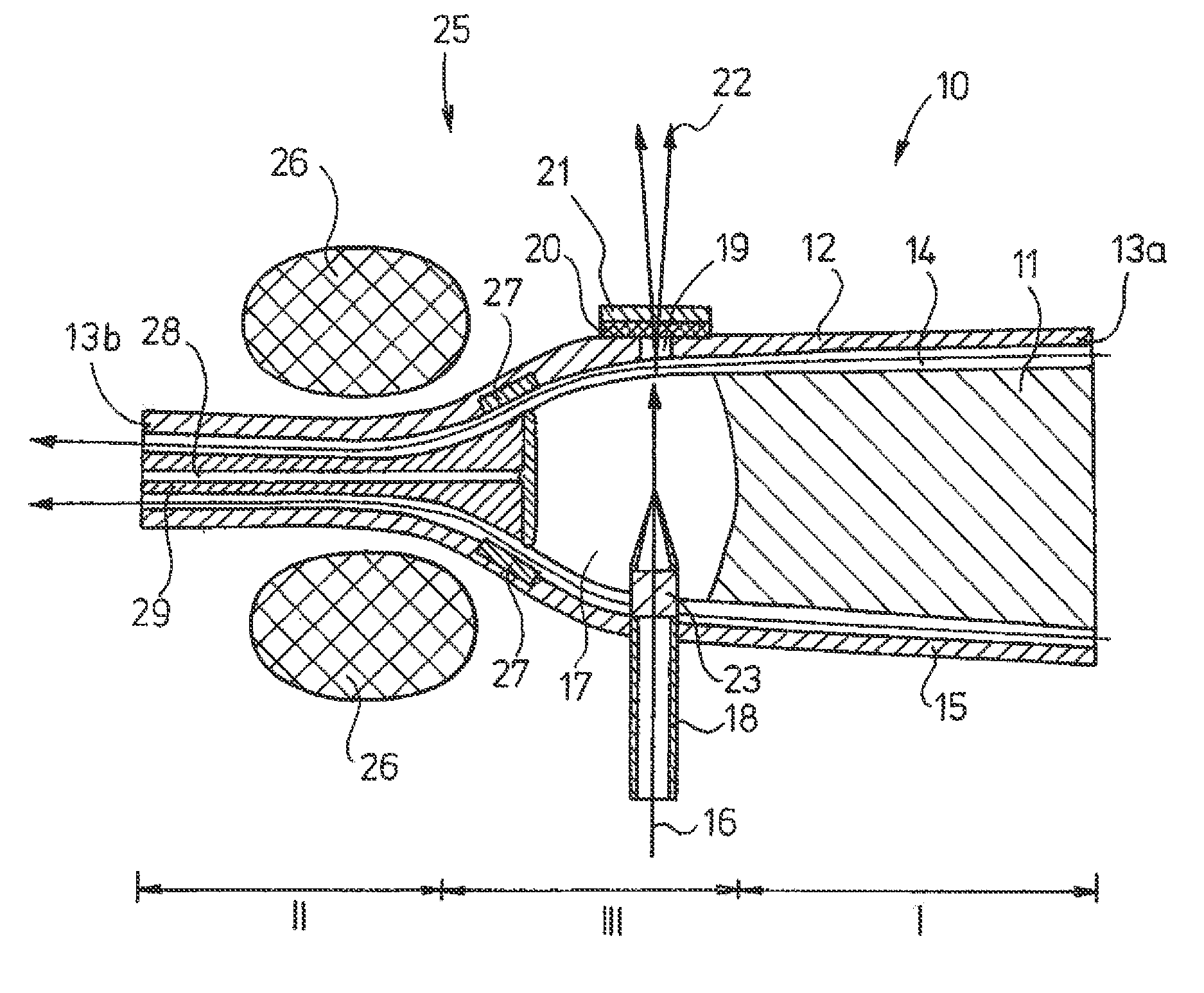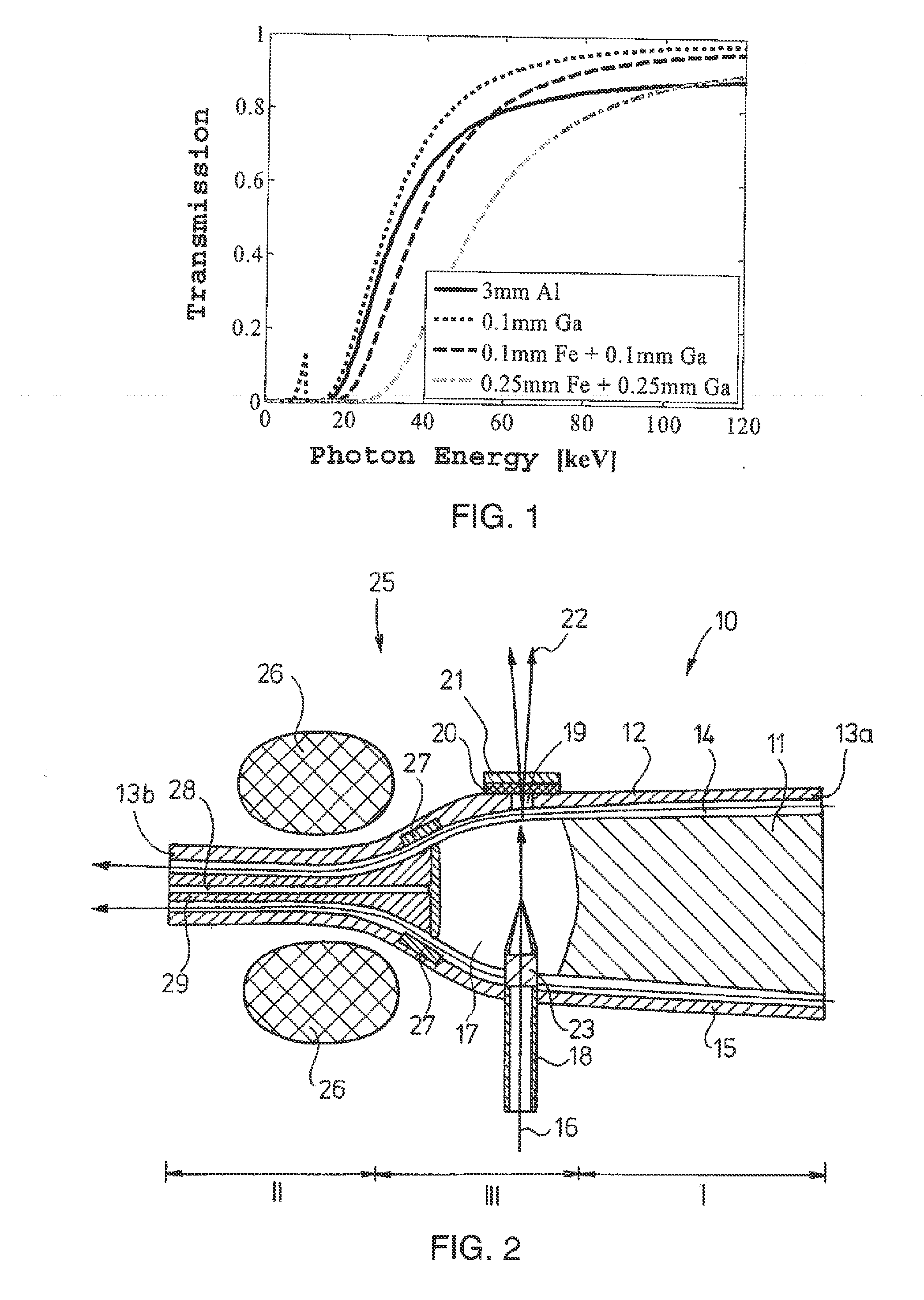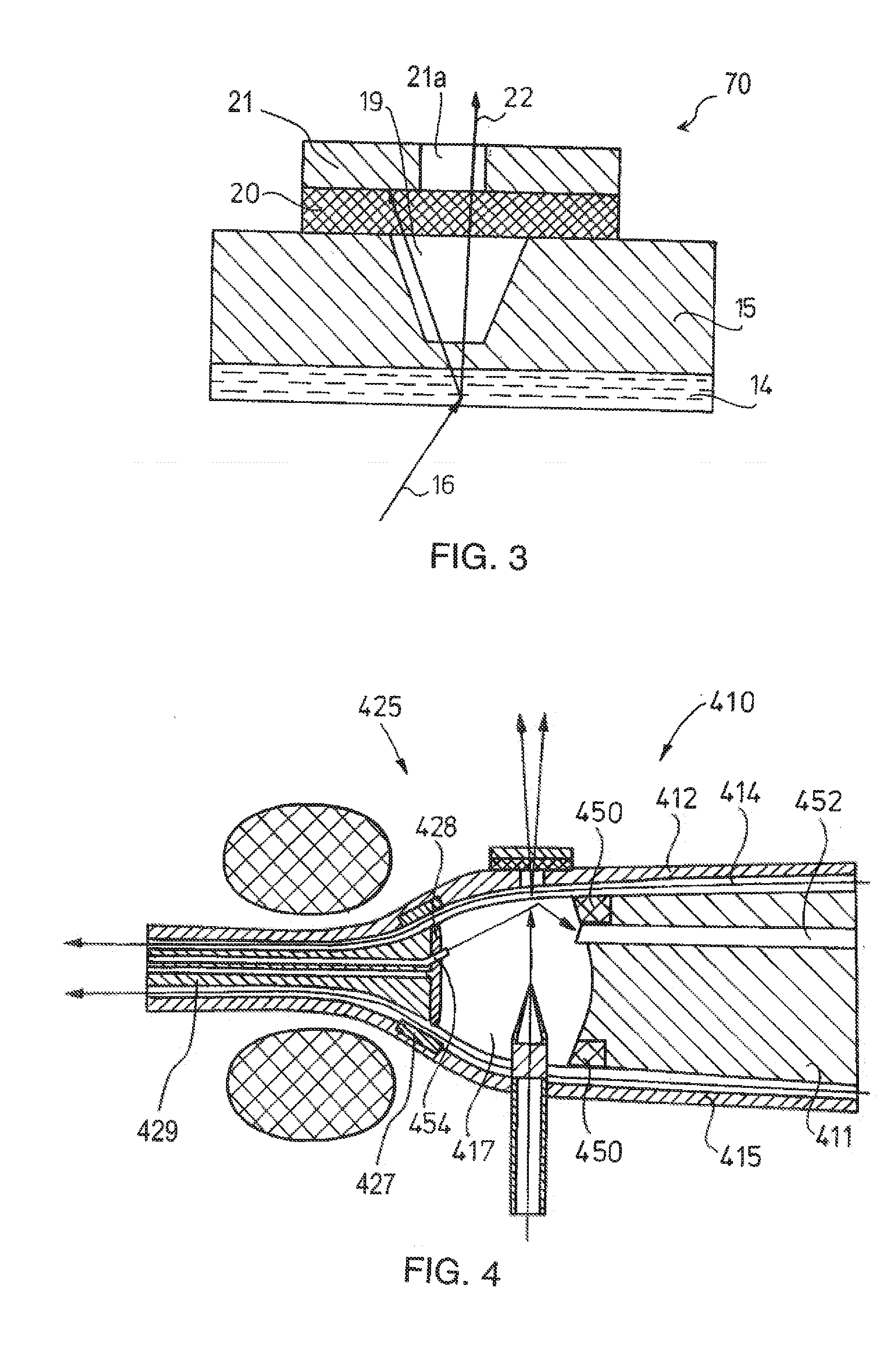Liquid anode radiation source
a radiation source and liquid anode technology, applied in the field of xray radiation sources, can solve the problems of uneven anode surface realizable exposure time, melting of anode material in the focal spot, etc., and achieve the effect of cooling or increasing the flowing anode material, reducing the thickness of the liquid anode, and reducing the exposure tim
- Summary
- Abstract
- Description
- Claims
- Application Information
AI Technical Summary
Benefits of technology
Problems solved by technology
Method used
Image
Examples
Embodiment Construction
[0033]The similar reference numerals used in the drawings will practically refer to the same unit in each case. In addition, for the sake of simplicity, the flow path of the liquid anode material in the drawings in each case with flow lines running in parallel with the body wall.
[0034]Hereinafter we will describe in more detail the various embodiments of a radiation source of the present disclosure, specifically in connection with various embodiments of a liquid anode X-ray radiation source.
[0035]Referring now to the drawings, FIG. 1 shows transmission of X-ray radiation calculated by the Beer-Lambert principle as a function of the energy of the X-ray radiation that is the photon energy for anode material produced from e.g., liquid gallium (Ga) layered on each other in various thicknesses and solid metal material of specified quality, especially steel (Fe). From FIG. 1, it can be seen that the transmission can be influenced by changing the thickness of the liquid Ga and the solid Fe...
PUM
 Login to View More
Login to View More Abstract
Description
Claims
Application Information
 Login to View More
Login to View More - R&D Engineer
- R&D Manager
- IP Professional
- Industry Leading Data Capabilities
- Powerful AI technology
- Patent DNA Extraction
Browse by: Latest US Patents, China's latest patents, Technical Efficacy Thesaurus, Application Domain, Technology Topic, Popular Technical Reports.
© 2024 PatSnap. All rights reserved.Legal|Privacy policy|Modern Slavery Act Transparency Statement|Sitemap|About US| Contact US: help@patsnap.com










